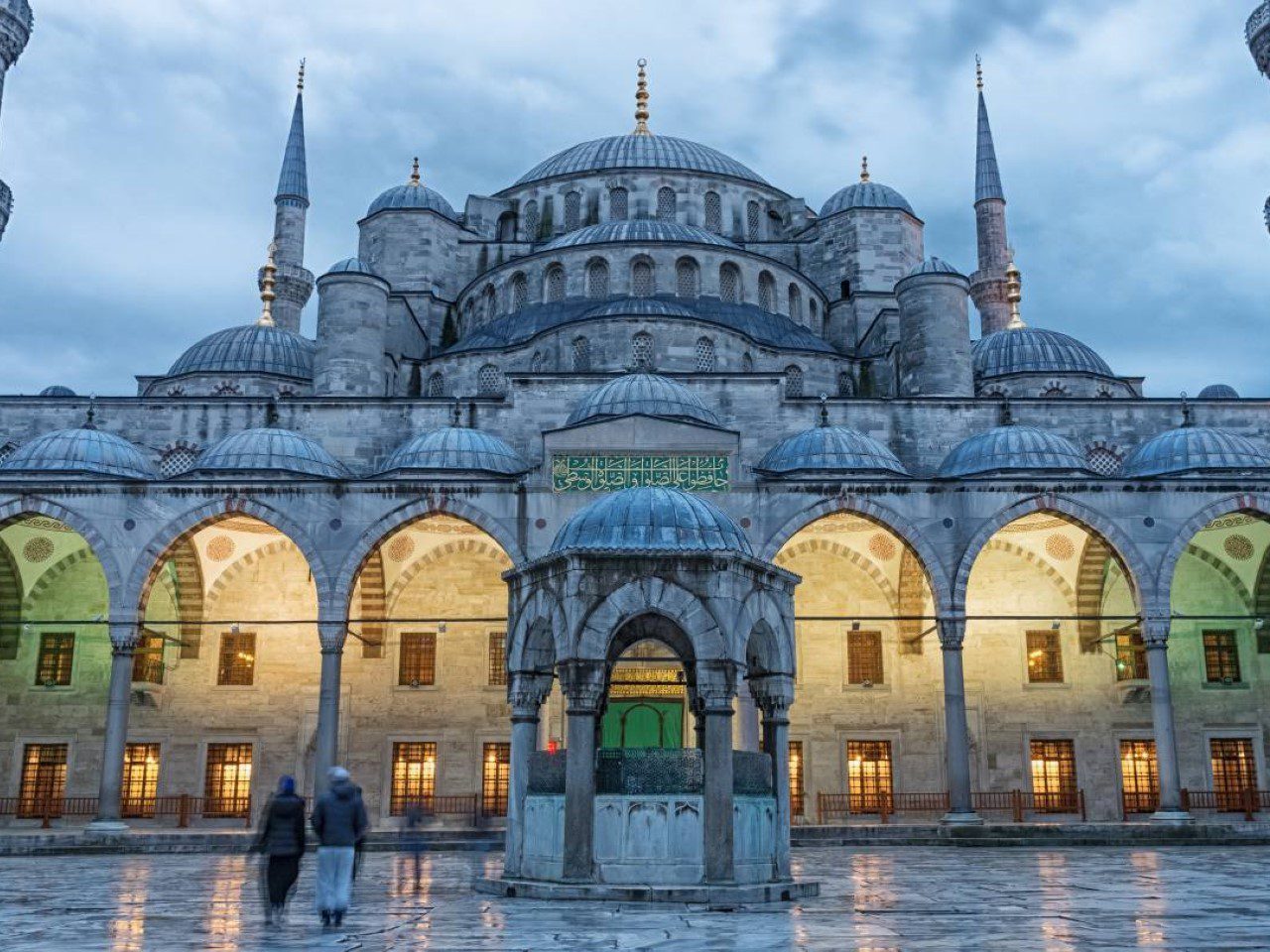The Blue Mosque, also known as the Sultan Ahmed Mosque, is a breathtaking architectural marvel that graces Istanbul’s skyline. This iconic Mosque symbolizes the city’s rich history and cultural heritage. With its stunning design, intricate tilework, and magnificent minarets, the Blue Mosque is a testament to the grandeur of Islamic architecture. In this blog post, we will delve into the captivating story of the Blue Mosque and explore the mesmerizing beauty it holds.
The Blue Mosque: A Jewel of Istanbul
The Blue Mosque, with its elegant domes and six minarets, is a masterpiece of Ottoman architecture. Constructed in the early 17th century under the rule of Sultan Ahmet I, its purpose was to rival the magnificence of the nearby Hagia Sophia. The Mosque derives its name from the breathtaking blue tiles that embellish its interior walls, creating a celestial atmosphere. Its impressive size, intricate craftsmanship, and peaceful courtyard make it a must-visit destination for tourists and locals.

Istanbul: A City of Cultural Fusion
Istanbul, the vibrant capital city of Turkey, offers a fascinating blend of history, culture, and modernity. It bridges Europe and Asia, creating a unique melting pot of traditions and influences. The Mosque is a shining example of this cultural fusion, embodying the Ottoman architectural style while incorporating elements from Byzantine and Islamic traditions. Exploring Istanbul’s rich heritage and diverse attractions is an unforgettable experience for every traveler.
The Architectural Marvels of Istanbul
Istanbul is home to several architectural wonders, and the Blue Mosque stands tall among them. Its grandeur lies in the intricate patterns of the Iznik tiles, the elegantly designed prayer hall, and the towering minarets that reach skyward. The Mosque’s symmetrical layout and spacious courtyard create a harmonious atmosphere that invites contemplation and serenity. For enthusiasts of Islamic architecture, the Mosque is a treasure trove of inspiration and admiration.

Exploring Istanbul’s Historic Sites
Visiting the Blue Mosque provides a gateway to discovering other historical attractions in Istanbul. Just a stone’s throw away, you’ll find the magnificent Hagia Sophia, a UNESCO World Heritage Site that once served as a church and was later transformed into a mosque. The Topkapi Palace, the former residence of Ottoman sultans, is another must-visit destination that offers a glimpse into the opulence and grandeur of the Ottoman Empire. Exploring these sites and more allows you to immerse yourself in Istanbul’s rich history and architectural splendor.

Experiencing the Blue Mosque: Practical Information
To make the most of your visit to the Blue Mosque, here are some practical tips:
- Dress code: As the Blue Mosque is a place of worship, modest attire is required. Ensure that your shoulders, knees, and head are covered as a sign of respect.
- Opening hours: The Mosque is open for visitors outside of prayer times. It’s best to check the specific opening hours in advance, as they may vary.
- Guided tours: Consider joining a guided tour to gain a deeper understanding of the Mosque’s history, architecture, and cultural significance.
- Visitor Etiquette: Please remember to be quiet and respectful while inside the Mosque. Avoid using flash photography and be mindful of other worshippers.
- Explore the surroundings: Take the time to wander around the Mosque’s courtyard and soak in the serene atmosphere. Don’t miss the opportunity to capture stunning photos of the Mosque’s exterior and minarets.

Conclusion
The Blue Mosque is a remarkable place of worship and an iconic symbol of Istanbul’s grandeur and architectural excellence. Its majestic beauty and profound historical significance make it an essential destination for those exploring the vibrant city.
Stepping inside this awe-inspiring Mosque, you will be transported to a place of tranquility and awe, where centuries of history and culture harmoniously converge.
Blue Mosque FAQs:
What is the significance of the Blue Mosque?
Also known as Sultan Ahmed Mosque, it holds immense historical and cultural significance in Istanbul. It showcases the grandeur of Ottoman architecture and serves as a place of worship for Muslims. Its stunning design and intricate tilework make it a popular tourist attraction.
How many minarets does the Blue Mosque have?
It is famous for its six minarets, a unique feature that sets it apart from other mosques. This architectural detail caused quite a controversy during its construction, as it was considered a challenge to the grandeur of the Kaaba in Mecca.
Can non-Muslims visit the Blue Mosque?
Yes, non-Muslim visitors are welcome to visit the Mosque. However, it's essential to respect the Mosque's rules and etiquette. Modest attire and a respectful demeanor are required while inside the Mosque.
Are guided tours available for the Blue Mosque?
Yes, guided tours are available for the Mosque, offering insightful information about its history, architecture, and cultural significance. Joining a guided tour can enhance your understanding and appreciation of this magnificent landmark.
What are the nearby attractions of the Blue Mosque?
The Mosque is in the historic Sultanahmet district of Istanbul, home to several other famous attractions. Some notable nearby sites include the Hagia Sophia, Topkapi Palace, Basilica Cistern, and the Grand Bazaar. Exploring these attractions delves deeper into Istanbul's rich history and cultural heritage.



0 Comment